Last Updated on 29 January 2022 by Alisea Mae
Creating a themed area of the garden is a great way to add a little creativity and diversity to the space. We can section off different areas with different styles in order. This then allows us to play about with planting ideas, landscaping, colours and textures. Multiple themed spaces in one large garden create a sense of exploration for visitors. It also means that designers can cater to the needs and tastes of different users. That is why it is important that families consider the potential of a natural outdoor play area for children. The other theme highlighted in this section is primarily for grown-ups. So, why not try some of these great ideas for a natural, kid-friendly area for creative and imaginative play and development.

What do we mean by natural play areas?
This guide focuses as much as possible on the natural materials that we can use in the garden to enhance a child’s play area. This is important for a number of reasons. First of all, it helps to give children a better understanding of natural materials and their use. Wood and rope are versatile materials that work in many different features. Secondly, these materials are more tactile and pleasurable for a child. Smooth driftwood, fibrous ropes, natural sands and willow cry out to be played with. Plastic just doesn’t have the same appeal. This leads us to the final reason for turning to natural materials where possible in this kids play area. The nation’s reliance on plastic is something that we can no longer ignore. It is vital that we all do a little more to reduce unnecessary plastic use. This makes even more sense in the garden, our natural outdoor space where children and wildlife are meant to feel safe.

10 great ideas for creating a natural play area for children
1) Start a traditional, natural play area with a wooden swing
To be honest, this is a popular option for a play area because a swing appeals to people of all ages. There is something freeing about swinging on a swing as an adult, so why not build a natural swing that everyone can enjoy. It is also one of the easier items to make in a homemade natural kid’s play area. Therefore, it is the perfect starting point for parents that want to practice their skills before moving on to tougher projects.
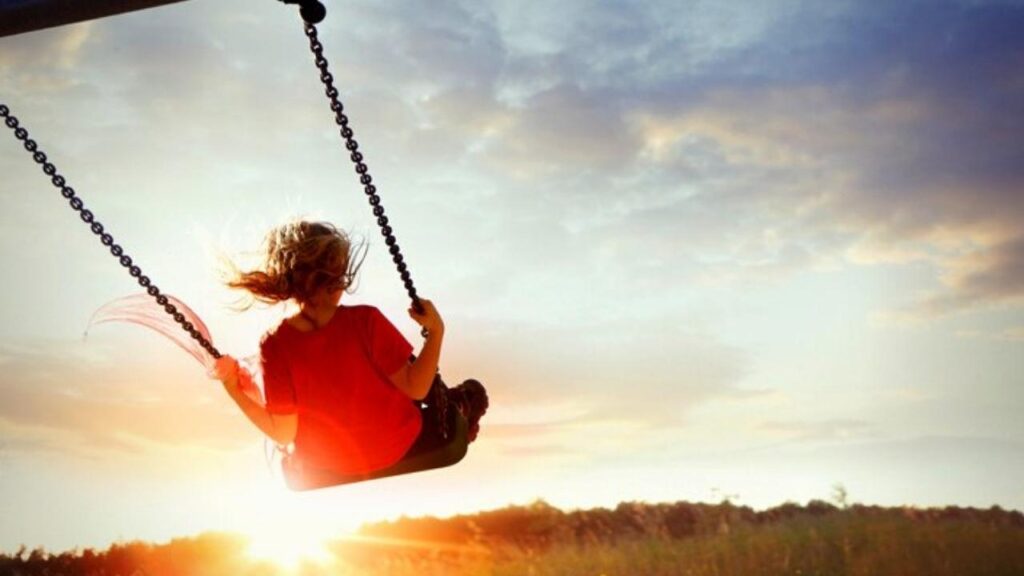
There are far too many plastic, cheap, generic swings out there. Remember the days of tying old bits of rope to planks of wood and throwing them over a tree? It really is that simple. If you want something with a little more security and support, build your own swing set with wood and rope. Of course, an alternative here is to create a tyre swing – another old favourite from the youth of many parents. This doesn’t fit in with the theme of natural materials quite so well. But, it could be a great upcycling project for an old tyre that needs a new use.
2) Diversify this play area further with a wooden seesaw
The seesaw is another great addition to add to the children’s play area. Again, it helps to opt for a wooden seesaw here rather than buy a plastic one. Any child can have a basic, plastic model. Many will find that it doesn’t hold up to rough play or any clever stunts. The best solution here is to build one that is custom made for the space. They can be a traditional shape or carved to fit a theme that runs through the natural play area. This could include a pirate ship, dragons or anything else. You can paint them up to suit tastes and themes. These wooden models may take some time to build, or cost a little more than they would from stores. Yet, they have more character and appeal than a flimsy plastic one.
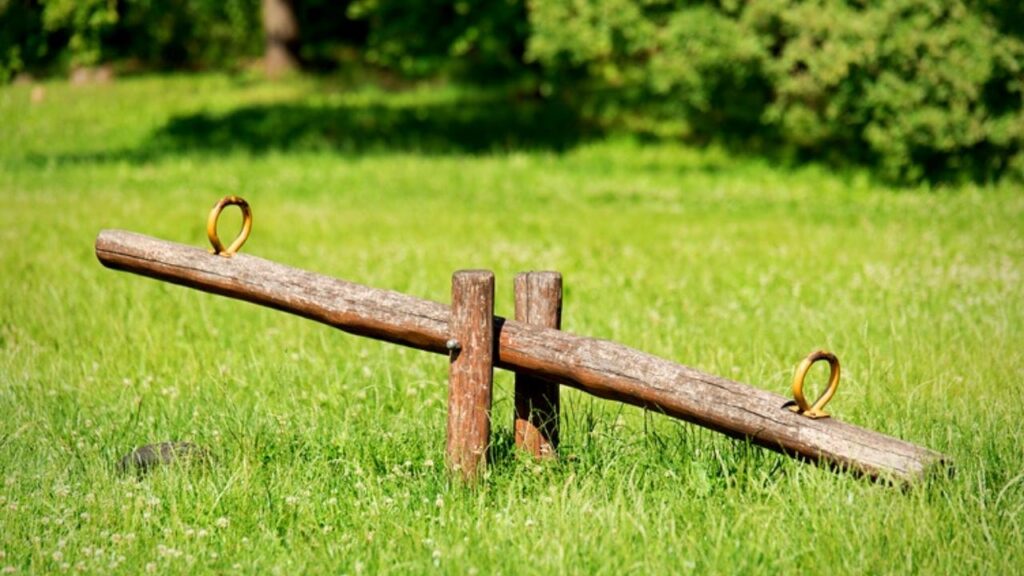
3) Sand play adds a whole new dimension with creative play and new textures
Sandboxes with sand and wood could be more simple to make, even more so than the swing. All you need is a basic structure and the right materials. Yet, they have lots of advantages. They are great for tactile play and the perfect addition to areas with a nautical garden theme. Sandpits and sandboxes went out of fashion for a while. There are still some parents that would argue that they aren’t the most hygienic places to play. But, they are a great playing surface for different games. They are a blank canvas for creative play with desert and alien landscapes. They also offer building materials for castles and other structures. It is a good idea to build a cover for the sandpit to keep rain, leaves and pets out when it’s not been used.
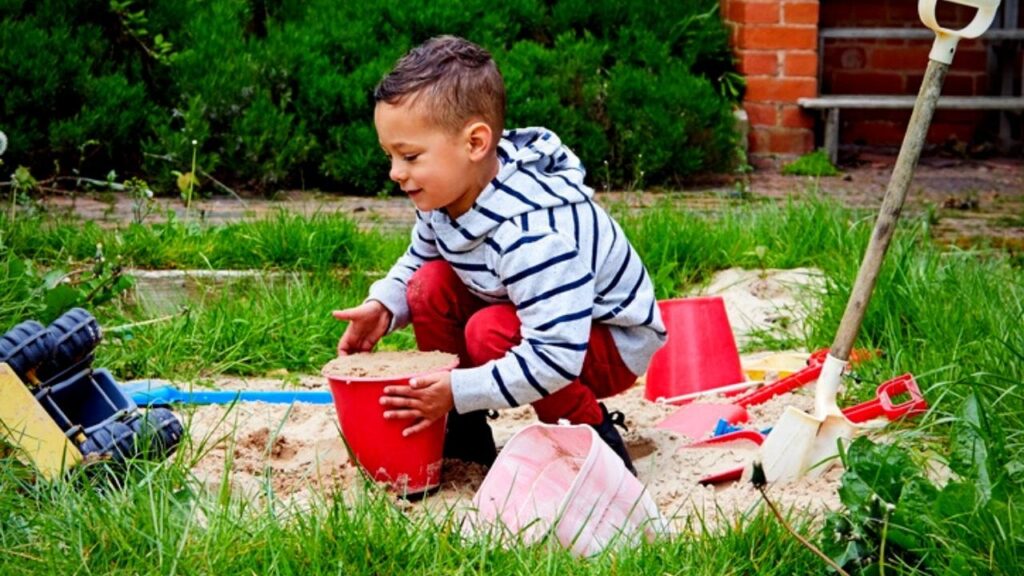
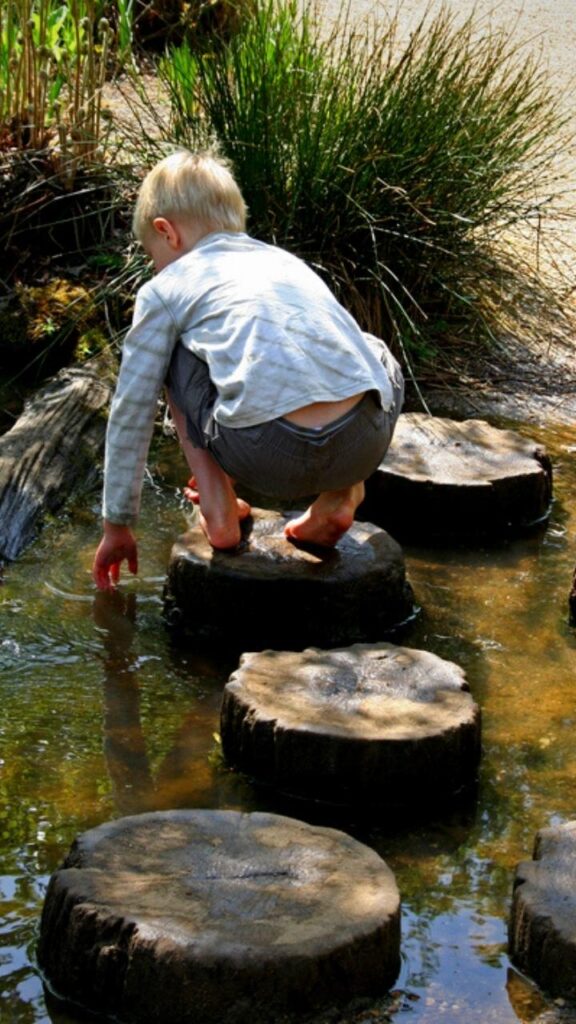
4) Then there is the benefit of stepping logs for balance play
This is something that will evoke strong memories of playtime in adventure parks and woods. There are many attractions that have play areas and grounds to explore. These spaces are filled with balance beams, stumps and other contraptions to test the skill of visitors. Families with enough room in the garden can create something similar for natural play at home. This is a simple plaything that encourages the physical development of children. Make sure to space them out at the right stride for young children and create the right supports for balance beams. These mini adventure playground trails through long gardens are only limited by the space, materials and building skills of parents.
5) Create a growing station where kids can plant their own vegetables
Playtime can be for educational pursuits as much as for fun. A growing station outdoors is a great way to get kids interested in the garden and the produce that it creates. This means creating a child-friendly area for potting up seeds and tending to plants. It is a place where they can fetch water in their own watering can, play with the compost and soil and write their own labels. It should also have steps and seating at the right heights for all users. Kids that have their own space may become more attached to the process and their personal projects. It also keeps them out of tool sheds and “grown-up” potting sheds, which can be a little more organised and dangerous.
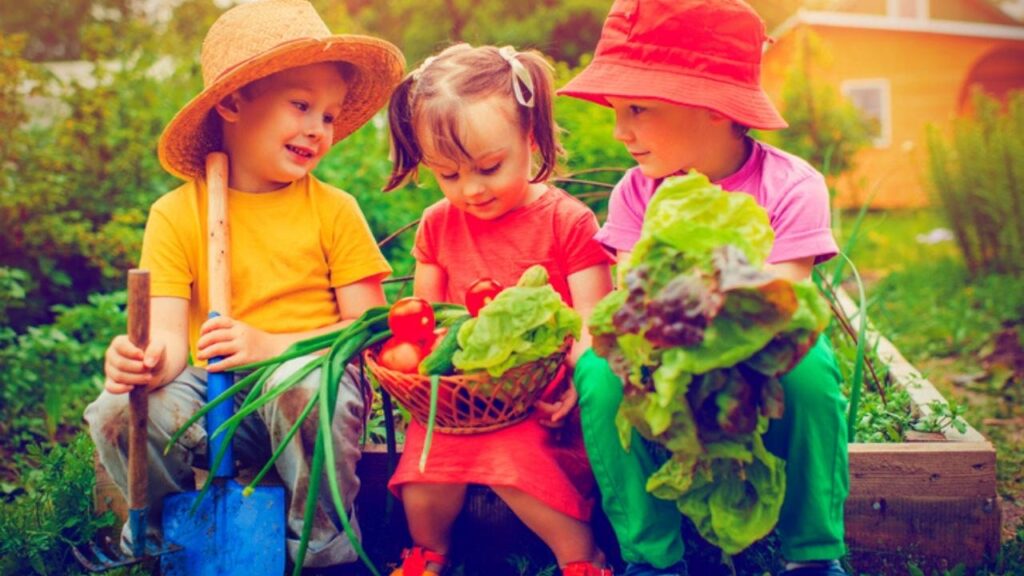
A good place to start here is with vegetables. Some kids miss out on the joy of growing and tasting real vegetables in the garden. This space lets them experience the colours and what the produce is really like. This means peas in a pod not frozen in a bag. Carrots that come in weird shapes and heritage colours rather than perfectly chopped sticks. You can even introduce them to things they have never even heard of.
6) Kids can also grow lots of flowers here too
In addition to growing vegetables, this kids growing area is the perfect place to introduce them to growing flowers. There are lots of ways that you can go with these planting projects. Spring bulbs are great for kids learning about the seasons, and they are easy and recognisable. Kids are more likely to know a daffodil and tulip than a more obscure perennial in the border. Alternatively, you may want to work on a wildflower area of their garden. Not only does this help them learn about native flora and fauna, but it also provides a great place for nature. Sow native favourites in different colours, such as cornflowers, poppies and ox-eye daisies. Watch them grow and flower and then identify the different bees and butterflies that feed on them.

These potting and planting areas also raise another point about the use of natural materials in the garden. While many gardeners are keen to plant for wildlife and pollinators, some don’t notice the amount of plastic in the garden. Many seed trays, plant pots and other garden tools are plastic. Where possible, try going for plant pots that are natural and biodegradable. There are even kits to make pots from newspapers. This is a great kid-friendly garden project for natural play in itself!
7) Add in an old sink for water play
An important part of this child-friendly growing area is a sink. An old basin – from an old home renovation or salvaged from the scrapyard – is a great tool. Parents can build workbenches for potting and planting with one of these sinks built-in. This provides a great basin to hold the water needed for watering plants, washing off mud and other water activities.

A sink is also helpful for gardens where children want a pond. Pond dipping is a great pastime for those that are patient and careful. A well-tended pond is a habitat teeming with aquatic life, but we rarely see it. Any secure container can become a pond. Set the old sink into the ground. Or if it is an old ceramic basin, use it as a raised pond. Put in some stones and gravel at the bottom for shelter, add a plant or two and you have a mini pond. It shouldn’t take long for creatures to arrive.
8) Also consider the potential of a mud play area
If you have a sink in your potting area to wash off the mud after an afternoon’s activities, you might as well have a mud play area to make it worthwhile. There are some parents that will turn up their noses at these creations. To them, mud equals dirt and germs. They don’t want kids getting ill or their homes getting dirty. Yet, playing in mud is an important part of childhood learning and natural play. It can even improve kids’ immune systems. Young children love the tactile feeling of mud, the squelchy noise and the idea of making a mess. Encourage them to do so in their own special area of the garden. Some people call these their mud kitchens. The creations are obviously great things to build and look at, but not to eat.
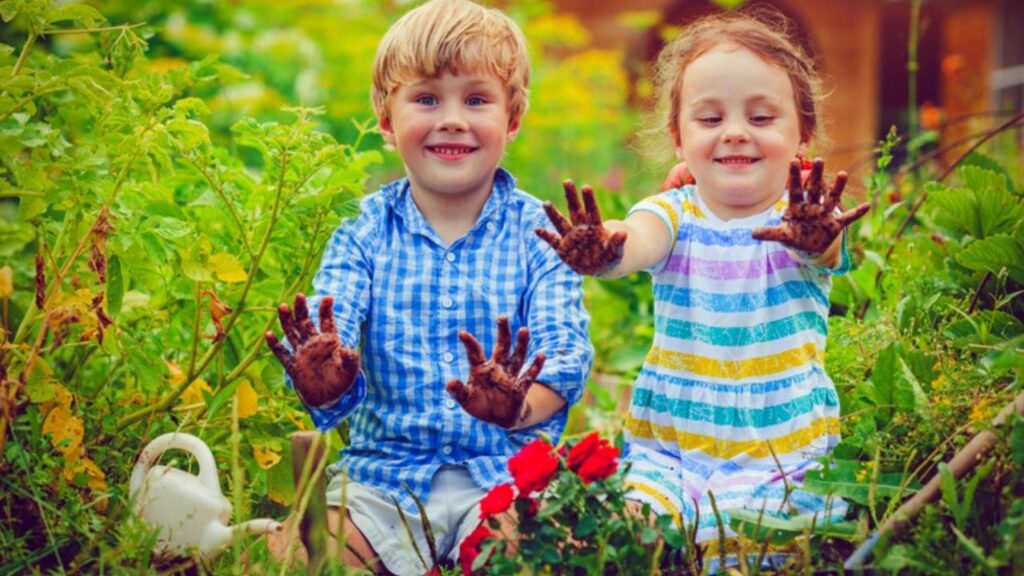
9) Families after a big project may decide to opt for a tree house
The opportunity for a treehouse might not come to all families and all gardens. For a start, they need a decent sized tree that will provide a secure, stable foundation for this building. Families that have a suitable tree in their garden then need the skill to design and build one. Or, failing that, they need the budget to hire someone to build it. A bespoke tree house can be costly, but it is important if it is to fit around the tree and celebrate the living structure. The last thing you want to do is delimb a tree for a generic house.
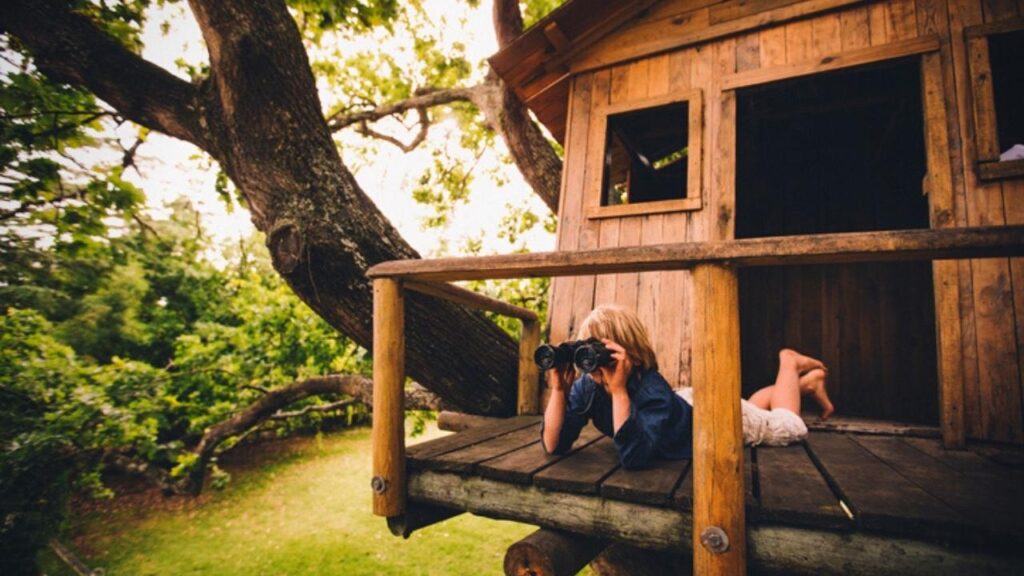
The choice of material is important here for this natural treehouse. It is unlikely that this structure is going to be made from anything other than wood. However, there are other touches that can help to make sure that this is a greener treehouse than others. What timber was used? Is it from a sustainable source? How was the timber treated and painted? What materials are in use within the treehouse?
10) Finally, there is the option of a playhouse for this natural play area
To top it all off, it is a great idea to have some form of a playhouse in this natural kid-friendly area of the garden. These play areas provide the perfect refuge where children can dream up fantasy adventures, work on projects and generally have some peace from adults. This should be their space, just like the treehouse. The design and structure will depend on the general theme of the area and the personality of the child. There are some kids that will like the more traditional looking playhouses – miniatures of grown-up dwellings. Then there are those that will love a more primitive style den.
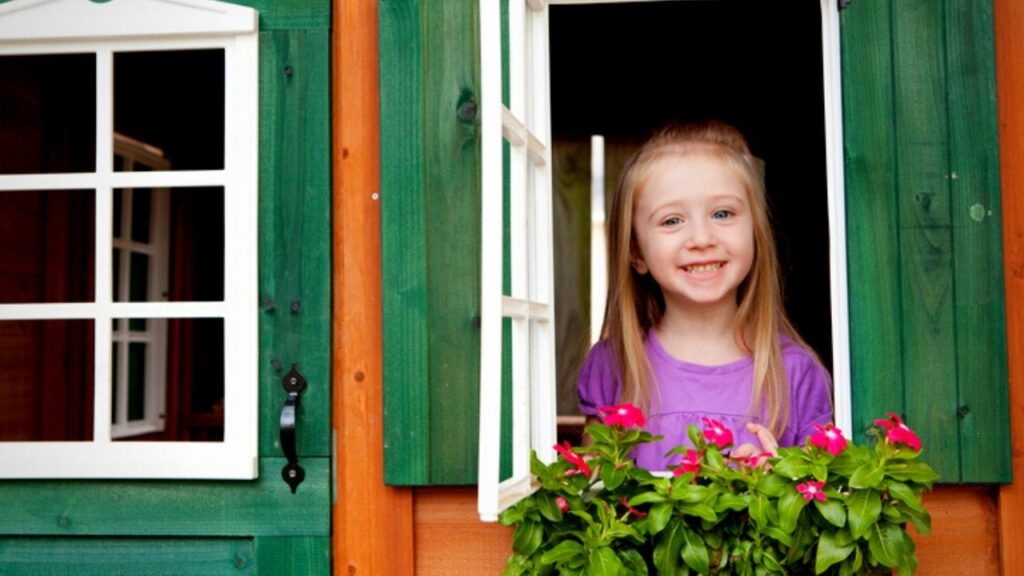
This is where parents also have to consider the materials used in the construction of these projects. One great option that many families will love, but may not have heard of is the willow dens or tunnels. We have an article all about the potential of living willow sculpture and structure in the garden. The most important thing is to keep it natural so it is in keeping with the ethos of the area. No more cheap plastic playhouses! The rest of these tips all highlight the many solutions for natural play areas without plastic. Don’t ruin it with a giant plastic structure.
Leave a Reply